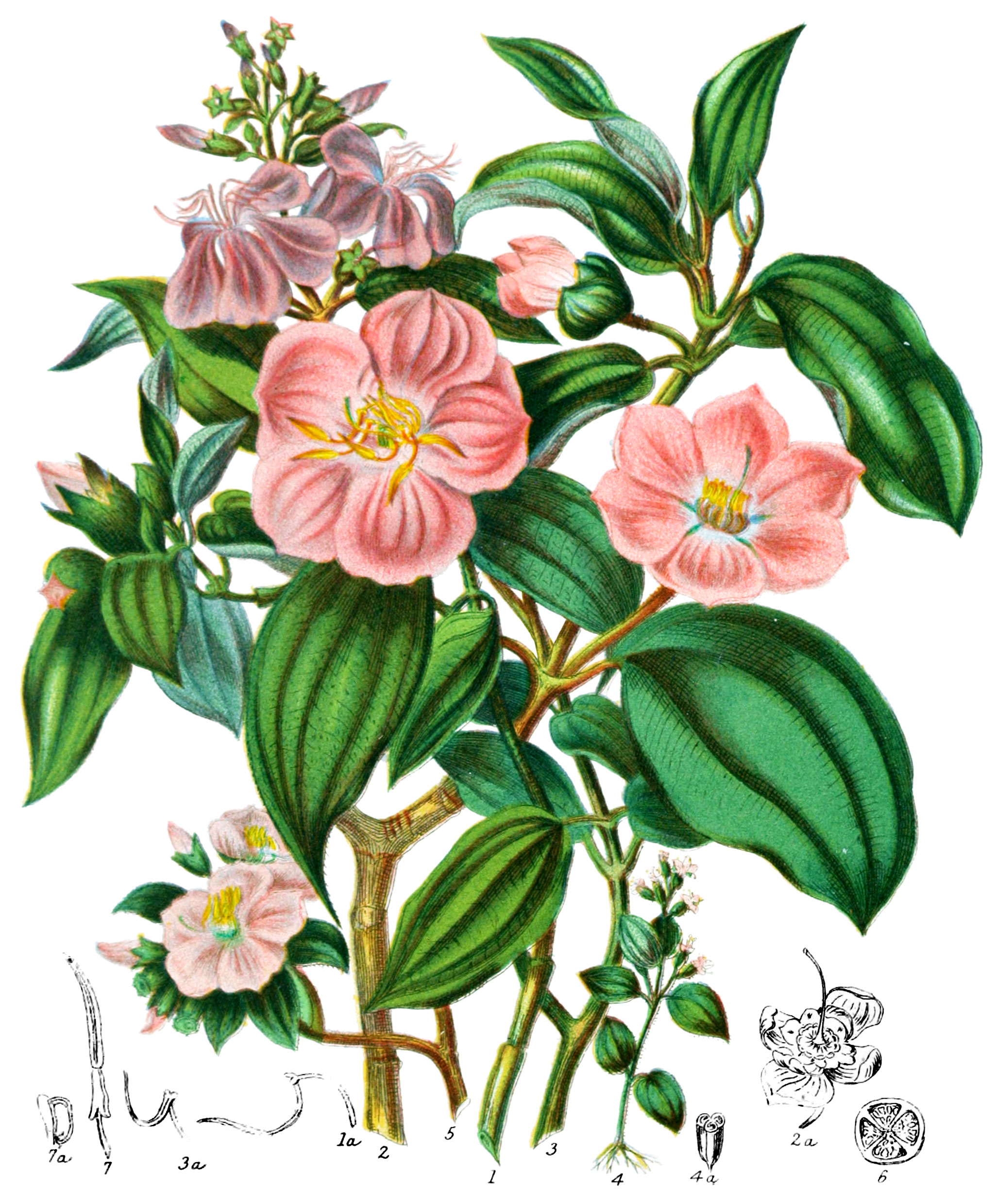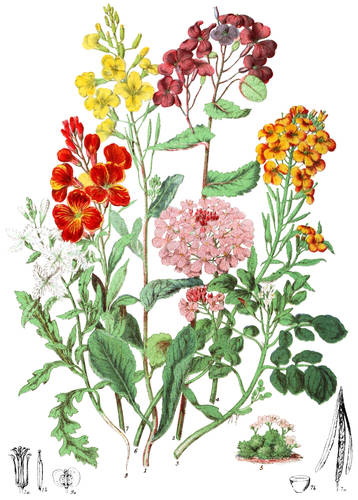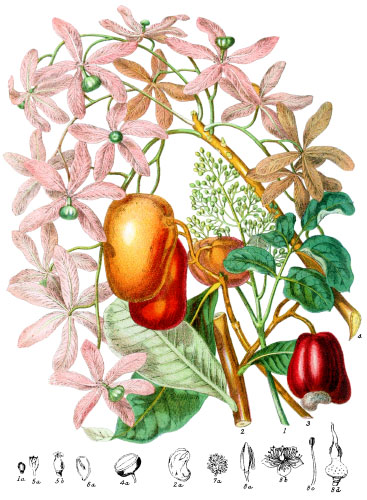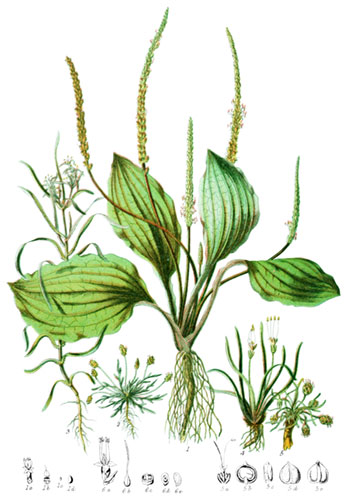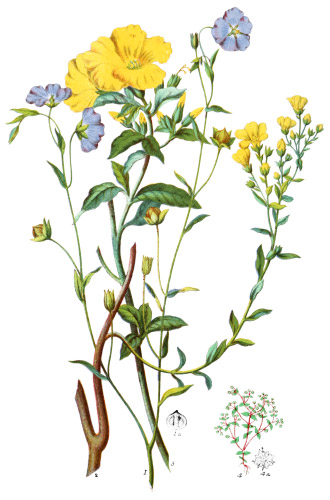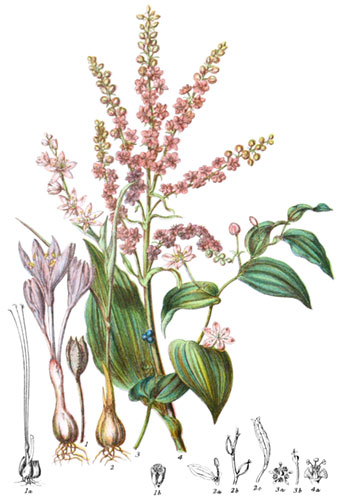Key characteristics
Trees, shrubs, and herbaceous plants. Leaves opposite, undivided, usually entire at the edges, without dots, and with several long ribs running from the base to the point. The flowers have a calyx of four, five, or six lobes, cohering more or less with the angles of the ovary. The petals are equal in number to the segments of the calyx, rising from the base, or from the edge of a disk that lines the calyx; in the bud state they are twisted. The stamens are generally twice as many as the petals, sometimes of the same number; the filaments are curved downwards in the bud; the anthers are long, two-celled, usually bursting by two pores at the point, and lengthened in various ways beyond the insertion of the filaments; sometimes they open longitudinally; before the flowers expand, they lie in cavidies between the ovary and the sides of the calyx. The ovary is partly united with the calyx, and conains several cells; the style is single with a simple stigma; a cup is often present at the top of the ovary, surrounding the style. The seed-vessel is either dry and distinct from the calyx, or succulent and combined with it; it has many cells, in which are numerous minute seeds, usually having appendages of some kind.
Melastomaceæ have most affinity with the Myrtle tribe, from which they differ in the petals being twisted in the bud, and the leaves having no dots.
A slight astringency is the prevailing character of this extensive trie, which throughout its whole range contains no unwholesome plant. Nevertheless, there are none of much importance to man, either as food or medicine, or for domestic uses; yet several of their genera were, on their first discovery, named after distinguished naturalists of various countries. The succulent fruit of many species is eatable, that of some is filled with a juicy pulp, which stains the mouth black in eating; whence the name Melastoma is derived. In some plants this juice is of so intense a black as to be used for ink in Guiana.
Select plants in this order
Not all plants listed are illustrated and not all plants illustrated are listed.
- The leaves of Melastoma malabathrica (1) are used to dye cottons black in India, are also considered medicinal. In Brazil, both wine and vinegar are prepared from the fermented berries of several species.
- From the down of the leaves of M. holosericeum a kind of tinder is made in Panama, large quantities of which are sent to Havannah.
- The aromatic leaves of M. Theœzans are employed for tea in Popayan, and are preferred to Chinese tea.
- Blackea trinervia (2), so named after Blake, the great naturalist of Antigua in the last century, is one of the most beautiful plants of the West Indies. At first it is slender, and supports itself by some neighbouring tree; afterwards becomes robust, and sends forth numerous branches and delicate rose-coloured flowers. The stamens are united at their base, forming a ring around the pistil. The fruit is a yellow berry, about the size of a gooseberry, of pleasant flavour, and eaten by the natives of Guiana.
- Osbeckia was named by Linnæus in honour of his countryman, Osbeck, a celebrated author of scientific works, and traveller in China and the East Indies.
- O. sinensis (5) is a pretty little species brought from China in 1818; its leaves have emollient properties.
- The fruit of O. Principis is used for a black dye in Brazil.
- Sonerila tenera (4) is one of the five genera peculiar to Asia; it extends beyond the general Tropical limits of this tribe, being found on the Deyra Doon, and in other districts of the Himalaya, during the rainy season; but of diminished size in those northern localities. Sonerila differs from other genera in this order, in having all its parts of frutification arranged in a tenary manner.
- The plupy fruit of Memecylon edule is eaten by the natives of Coromandel, although it is too astringent to be agreeable foot; the leaves afford a yellow dye, as well as those of Miconia tinctoria, Cremanium tinctorium, and other species.
- Blackea parasitica yields a red dye.
- The fruit of Lasiandra argentea, Tococoa guianensis, and others, give a deep black hue to cotton.
- The bark of Medinilla yields an emollient juice; some species produce numerous bright purple flowers on the stem, and are highly ornamental.
- The acid leaves of Astronia papetaria are cooked as sauce for fish in the islands of the Malay Archipelago; the wood is hard and used for posts.
- The berries of Tristemma virusanum are employed medicinally in the Mauritius; those of Myrrhinium atropurpureum are of agreeable flavour.
- Macaco wood is obtained from Tococo guianensis, the fruit of which is eaten by man, but is particularly relished by monkeys.
Locations
This Tribe is, with few exceptions, limited to the equinoctial regions of the globe, and chiefly to the tropics of South America, where about 650 species have been found; on the Andes they ascent to 11,000 feet. Nearly an eighth portion of the genera occur in Asia; Sonerila and four others have not yet been discovered in any other quarter of the world; the various species inhabit principally the southern parts of India, a few only extend into the northern provinces. Some species are found in China; a very few are at present known in New Holland. None have been discovered in Africa north of the Desert of Sahara, nor beyond the Tropic of Capricorn on the south. Melastoma and Osbeckia are natives of Asia, Africa, and America: none belong to Europe.
Legend
- Melastoma malabathrica, Black Strawberry-Tree. East Indies.
- Stamen.
- Blakea trinervia, Three-ribbed Blakea. Jamaica.
- Calyx and Pistil.
- Pleroma viminea, Twiggy Pleroma. Brazil.
- Stamen.
- Sonerila tenera, Delicate Sonerila. Himalaya.
- Seed-vessel.
- Osbeckia sinensis, Chinese Osbeckia. China.
- Stenodon suberosus. Section of Fruit.
- Stamen of Medinilla radicans.
- Section of Seed.
Explore more
Posters
Decorate your walls with colorful detailed posters based on Elizabeth Twining’s beautiful two-volume set from 1868.
Puzzles
Challenge yourself or someone else to assemble a puzzle of all 160 botanical illustrations.
